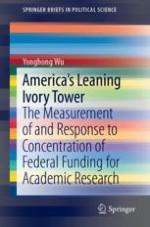This book will expand the body of literature on capacity-building in science and improve public understanding of the issues regarding geographical concentration of federal research funding. The federal government has been the primary sponsor of academic research in the U.S., and the peer-review system has been the primary mechanism for distributing federal government funding for research among universities. The peer-review system ensures the production of the best science by funding the most capable researchers in the country. As a result, federal research funding has been concentrated in high-capacity states where many of the most capable researchers reside. Despite official action - such as the implementation of the Experimental Program to Stimulate Competitive Research (EPSCoR), which targets low capacity jurisdictions for federal funding - the amount of resources going to each state for research is highly uneven. This book provides recommendations on how to improve policy design and program implementation for better research capacity-building outcomes. The book lends itself to a wide audience, as it does not focus entirely on high-level statistical analysis, but will have specific appeal to researchers in science policy, federal budgeting and higher education policy.
